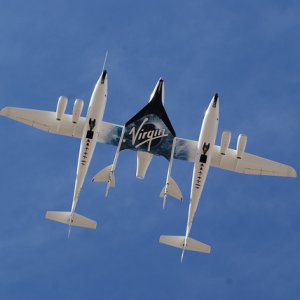Are We Going to Be Able to Fly Within Cities?

STORY INLINE POST
Humans have always dreamed of flying and the day when we will be able to do so in our daily journeys is getting closer and closer. Although autonomous or unmanned aerial vehicles (AAVs or UAVs) have been in development since the first half of the 20th century, the reality is that investment has been mainly oriented toward military applications, as is the case in many other areas of technology. Perhaps it was not until the end of the same century that, together with the technological development in electronics and control systems, applications began to be visualized and oriented more for commercial purposes to solve particular situations in the daily life of a community.
Autonomous aerial vehicles are aircraft designed to fly, operate and navigate without requiring any external control support in the air, either remote or a human on site. One of the main functions of these vehicles is transportation, both for cargo and passengers, which is why large companies dedicated to this field have also taken on the task of participating in the design of these vehicles.
At the beginning of this century, these unmanned vehicles began to be contemplated as an efficient, and above all, economical way to perform various tasks, including surveillance, specialized aerial photography, and precision agriculture. With the arrival of new technologies or at the accelerated growth of others, such as artificial intelligence (AI), GPS navigation, sensors, radar and laser systems, and, of course, a diversity of advanced programming and control software, these vehicles have now substantially increased their basic characteristics, such as load capacity, flight autonomy and speed. This allows civilian activities to be carried out in areas that are difficult for other vehicles to access in a faster and, most importantly, easier and cheaper way.
Autonomous aerial vehicles oriented to the delivery of goods are about to become a commercial reality, in what is undoubtedly a response to the requirements that the emerging market triggered in the last three years. One of the main aspects that is being addressed, or that must be developed permanently, and with the same speed and efficiency as the technological element, is the regulation of the use of airspace and the operation of AAVs, with a key focus on safety.
Federal legislation or regulation in these fields primarily regulates UAVs providing commercial services. In the US alone, the Federal Aviation Administration (FAA) has authorized courier, parcel and e-commerce companies to carry out goods delivery services since 2020; although their platform for doing so is not fully developed. Similarly, in Europe, through the European Union Aviation Safety Agency (EASA), a courier and parcel delivery company has been authorized to provide this service, although for now, it is only available in some areas of Germany.
Currently, autonomous aerial vehicles for passenger transportation are being very seriously developed by various organizations around the world, both from the private and public sectors. Airbus bases its Vahana and City Airbus has its eVTOL projects. Others include the Ehang in China, the PAV (Passenger Air Vehicle) from Boeing, or even the Uber Air eVTOL. The different aeronautical authorities in various countries have to certify these aircraft. In Mexico, the Federal Civil Aviation Agency (AFAC) has a process for the certification of such vehicles.
These vehicles represent great technological advances that make them comfortable and safe passenger transportation aircraft. The advanced avionics available will include great developments from different areas, such as artificial intelligence, autonomous control systems, advanced sensors of different types, and advanced movement algorithms, which will allow them to operate without the traditional services that current aircraft pilots require. They will generally be aircraft designed for up to four passengers with light baggage and will be designed specifically for short trips. Additionally, they will have the ability to fly in pre-programming modes and navigate the designated airspace autonomously. Moreover, they should be the medium-term solution to the safe, effective, efficient and sustainable passenger transportation of the future.
There are still significant challenges regarding the development of these AAVs, among which we can highlight:
-
Ensuring a level of operational safety in flights superior to that of conventional aircraft in terms of navigation and communication between AAVs;
-
Having the necessary navigation infrastructure to guarantee the constant location of AAVs
-
Securing an energy system that is safe, sustainable and of long durability
-
Integrating a regulatory system to ensure the coexistence of a fully automated airspace with conventional airspace
-
Reducing costs of production.
In the future, in addition to the aforementioned transportation of goods and other services, it is expected that the market generated in the transportation of people will be just as important, although much more demanding in the use of new and developing technology to ensure the safety of passengers. It is expected to become the most comfortable and economical means of transportation to safely reach short-medium destinations, operating autonomously and adapting to adverse weather and difficult geographical conditions, and without pilots.
Our cities and way of life will change significantly with the use of these technologies. Therefore, we must prepare ourselves in our country, mainly in two areas: adapting our legislation to be friendly to the development and implementation of new forms of mobility and investing strategically in education and research that will allow us to have the necessary talent to be competitive in the sector.
Advanced mobility is a reality at the technological level, so if we do our part properly, we will be flying in our cities sooner than we had imagined, just as all of us who grew up with the Jetsons have dreamed of.








 By Enrique Sosa | Rector -
Mon, 04/17/2023 - 09:00
By Enrique Sosa | Rector -
Mon, 04/17/2023 - 09:00
















